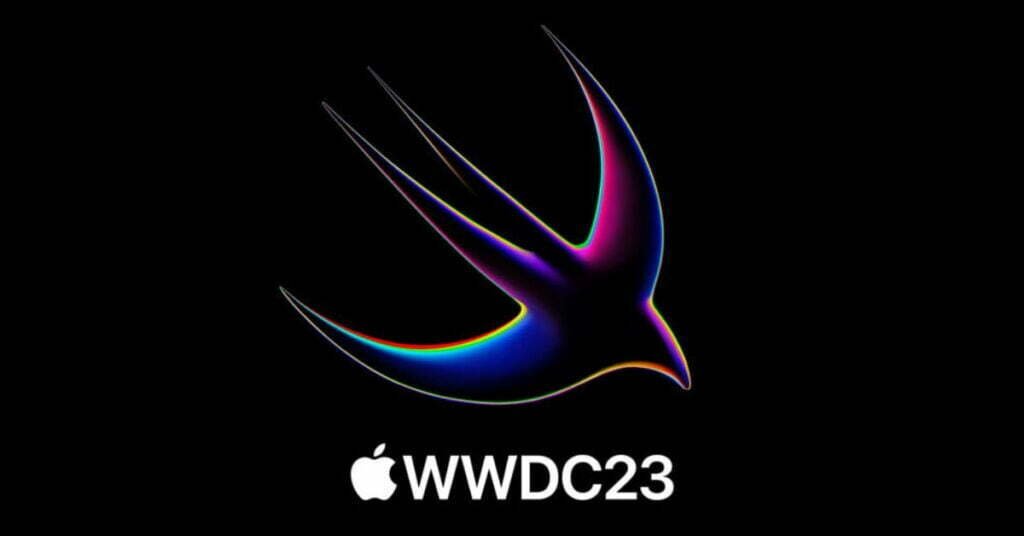The Apple Vision Pro, a ground-breaking mixed-reality headset, was unveiled by Apple at their widely anticipated WWDC 2023 event. This amazing device ushers in a new era of Augmented Reality experiences because of the cutting-edge Apple R1 chip, a special CPU created especially for this headset. By processing data from a variety of sensors, including 12 cameras, 5 sensors, and 6 microphones, in an astonishing 12-millisecond time frame, which is eight times faster than the blink of an eye, the R1 chip greatly contributes to assuring a fluid and responsive AR experience. The R1 microprocessor’s eye and hand tracking capabilities, in addition to aiding the smooth operation of the Vision Pro headset, allow for natural input and control.
Apple R1 Chip Key Characteristics:
The Apple R1 chip is suited for Augmented Reality applications thanks to a number of key characteristics, including:
High-speed Processing
A specially created semiconductor, the Apple R1 chip is made for augmented reality (AR) applications. High-speed processing is one of its primary features. The r1 chip can process data from a range of sensors in just 12 milliseconds. This data processing is eight times faster than the blink of an eye. This guarantees a fluid and responsive AR experience, lowering motion sickness and increasing user satisfaction.
The 5-nanometer technology, the R1 chip’s potent CPU and GPU, as well as its effective memory architecture, all contribute to its high processing speed. Due to the 5-nanometer technology, the R1 chip’s performance and efficiency are increased which enables it to fit more transistors into a smaller area. Additionally extremely powerful, the R1 chip’s CPU and GPU can handle data from the headset’s sensors swiftly. Also, the memory architecture of the R1 chip is created to reduce latency, which enhances the responsiveness of the AR experience.
The Apple Vision Pro headset will be able to give a genuinely immersive AR experience thanks to the R1 chip’s high-speed processing. The R1 chip will aid in ensuring that users can interact with AR items in a natural and fluid way by processing data from the headset’s sensors fast and effectively. The Apple Vision Pro headset will become a really ground-breaking AR product as a result of this, which will assist to lessen motion sickness and increase user satisfaction.
Eye Tracking
Real-time gaze tracking by the r1 chip apple enables straightforward user input and control of the AR experience. This implies that users can interact with AR objects by giving them a quick glance. For instance, If users want to choose an object they can give a quick glance to it. They can also focus on an object before bringing their eyes closer to it and give it a quick glance. Additionally, eye tracking enables more intuitive and natural user interfaces. Users can browse a menu, for instance, by quickly scanning the available selections.
Hand Tracking
Real-time tracking of the user’s hands by the R1 chip enables intuitive and natural control of virtual items. Therefore, users only need to use their hands to interact with AR items. For instance, If kids want to move an object, they can drag it with their fingers or pick it up with their hands by gripping it. Additionally, hand tracking enables user interfaces that are more logical and intuitive. Users can navigate a menu, for instance, by pointing at the various choices.
Spatial Awareness
The capacity to recognize the spatial relationships between oneself and one’s environment is known as spatial awareness. It is necessary for a number of activities, such as navigation, avoiding obstacles, and interacting with environment items.
The R1 chip is a brand-new chip created specifically for augmented reality (AR) applications to enhance spatial awareness. A camera, a depth sensor, and an inertial measurement unit (IMU), are some of the special sensors that R1 chip has. User’s position and orientation in space are tracked by these sensors. A 3D map of the user’s surroundings is then made using this data.
The spatial awareness features of the R1 chip enable AR apps to deliver a more precise and safe user experience. The R1 chip, for instance, can be used to stop people from engaging with virtual items and walking into actual objects.
Apple R1 Chip Benefits:
The apple r1 chip provides Augmented reality headset users with the number of important advantages, including:
Quick and Responsive Experience
The apple r1, high-performance microprocessor, is made for augmented reality (AR) applications. Because of the chip’s powerful high-speed processing capabilities, AR experiences move quickly and smoothly with minimal latency. This gives users a more enjoyable and immersive experience and lessens the possibility of motion sickness.
The chip’s potent CPU and GPU can analyze data for rendering AR experiences very quickly. Low latency of the chip guarantees a short delay between user actions and the reaction of the AR experience. Because of the chip’s minimal power consumption, the AR experience can be enjoyed without a power source.
Intuitive Input and Control
A new chip called the R1 is intended to make augmented reality (AR) apps’ input and control more understandable. A camera, a depth sensor, and an inertial measurement unit (IMU), are some of the special sensors that R1 chip has. These sensors keep a track of the user’s gaze, hand movements, and head position. The interaction with AR applications is then made more natural and simple using the information provided.
The R1 chip, for instance, can be used to operate augmented reality applications by gazing at virtual things. The user can also manipulate virtual things with their hands by grasping, moving, or resizing them. A more immersive AR experience may be achieved by using the R1 chip to track the user’s head position.
The intuitive input and control capabilities of the R1 chip have the potential to improve the user-friendliness and engagement of AR applications. The R1 chip can help AR become more widely used by facilitating user interaction with AR apps.
Safe and Accurate Interaction
The safe and precise interaction capabilities of the R1 chip have the potential to improve the usability and reduce the risk of accidents in AR applications. The R1 chip can aid in the widespread adoption of AR by making it simpler for users to engage with AR applications without unintentionally bumping into objects.
The R1 chip, for instance, can be utilized to stop a user from stumbling into a wall while interacting with a virtual object. If it is observed that the user was about to walk into a wall, the R1 chip would keep track of the user’s position and orientation in space and it would warn them or possibly stop them.
Apple R1 Chip Applications:
Gaming
The R1 chip is perfect for gaming applications because of its high-speed processing speed and low latency. As a result, gaming can be realistic and entertaining with no lag. The spatial awareness capabilities of the R1 chip can also be leveraged to produce more realistic gaming environments. The user’s head position and orientation, for instance, might be tracked using the R1 chip, and the game’s perspective could then be adjusted as necessary.
Education
Learning environments that are compelling and dynamic can be produced with the R1 chip. This is so that realistic and interactive 3D models that may be used to recreate real-world situations can be rendered using the R1 chip. Additionally, augmented reality (AR) experiences that can be utilized to improve learning can be made using the spatial awareness capabilities of the R1 chip. By tracking a user’s position and orientation in a virtual classroom, for instance, the R1 chip might be utilized to deliver individualized training to that user.
Work
Productivity solutions that help users work more productively can be made using the R1 chip. This is due to the R1 chip’s ability to produce intricate 3D models and simulations, which may be utilized to enhance teamwork and decision-making. The R1 chip’s spatial awareness capabilities can also be used to build augmented reality (AR) experiences that can be used to enhance visualization and training. By tracking a user’s position and orientation in a virtual workplace, for instance, the R1 chip might be used to give them access to documents and programs that are pertinent to their current location.
Entertainment
Experiences that are interactive and enjoyable can be produced using the R1 chip. This is so that games, movies, and other types of entertainment may be made using the R1 chip’s ability to simulate immersive and realistic 3D environments. The R1 chip’s spatial awareness skills can also be used to develop augmented reality (AR) experiences that can be used to improve entertainment. The user might have a customized watching experience, for instance, by using the R1 chip to track their position and orientation within a virtual concert.
Conclusion
An important development in the field of augmented reality is the Apple R1 chip. Due to its fast processing, eye and hand tracking skills, and spatial awareness, the R1 chip provides a flawless, immersive, and secure AR experience. The R1 microprocessor opens up new possibilities for engaging and dynamic experiences in work, play, and education. As Apple continues to advance technology, the R1 chip stands out as a powerful tool for altering how we interact with the world around us. With its integration into the Apple Vision Pro headset, the R1 chip sets a new standard for augmented reality and paves the way for future advancements in this fascinating field.


